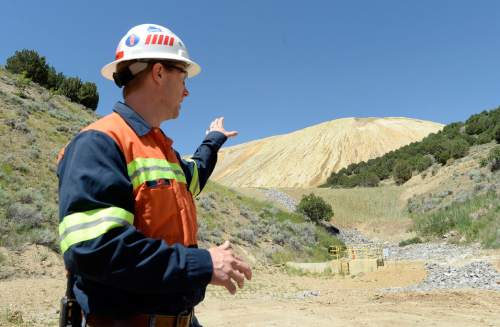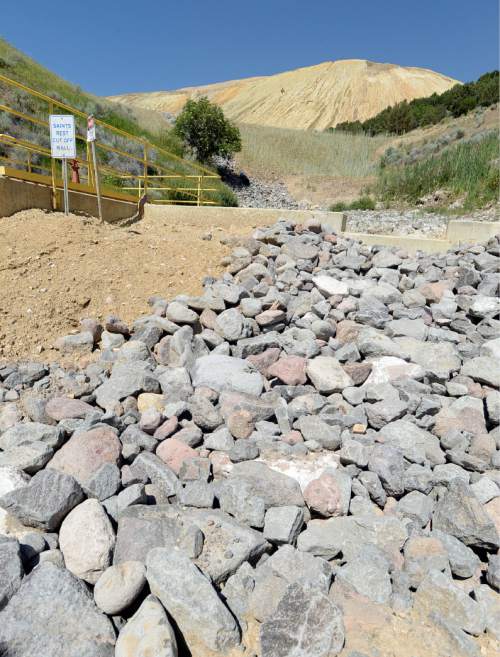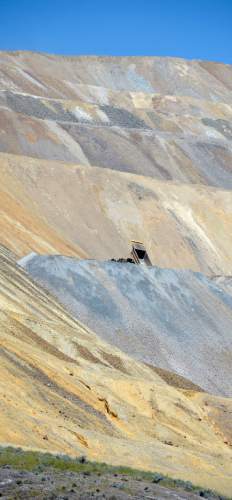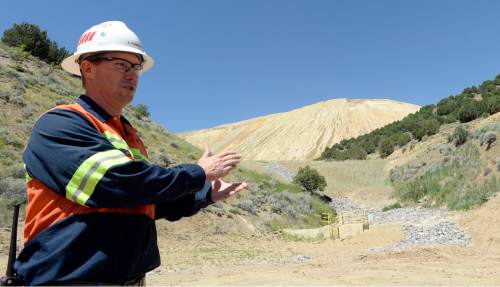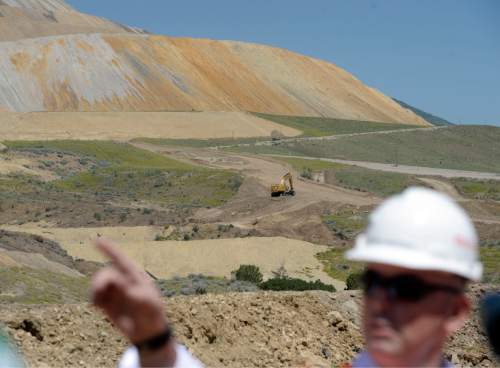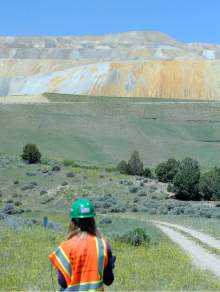This is an archived article that was published on sltrib.com in 2015, and information in the article may be outdated. It is provided only for personal research purposes and may not be reprinted.
South Jordan • Kennecott provided a peek Monday at company plans to handle new waste rock coming out of the Bingham Canyon mine in a more becoming and environmentally sensitive fashion.
Over time, said Kennecott spokesman Kyle Bennett, the work could change the appearance of the mine's huge waste dumps from yellow to brown/green.
The $100 million project will involve scraping the toe of the lengthy waste pile down to bedrock and storing the excavated topsoil elsewhere until it's needed.
As tons of waste rock are hauled out of the massive open-pit mine — restored to full operations after a massive landslide in April 2013 curtailed operations for much of a year — they will be worked into terraces stepping up the now-steep faces of the existing dump piles. The topsoil then will be put back into place, supplemented with seeds of native grasses, shrubs and forbs expected to develop eventually into vegetation befitting a semi-arid landscape.
In addition, dozens of retention basins and cutoff walls will be engineered into these new foothills to prevent storm runoff fouled by waste-pile contaminants from leaving Kennecott's property. Some did on Sept. 13, 2013, after a cloudburst dropped 3.6 inches of rain on Kennecott's Oquirrh Mountain holdings in just two hours.
"The community will ultimately see a mountain come back to life," said Michael Piercy, Kennecott's general manager over construction, during a media tour Monday along dirt roads at the base of the waste pits on the Salt Lake Valley's southwest side.
"It will be much more natural, much more like the mountain looked in its original life."
Piercy led the group to points on the southern and eastern ends of the three-mile-long waste pile to provide examples of the kind of work that will be undertaken through 2020.
"This investment underscores the potential we see in the operations," Bennett said. This is the most historic, visible waste pile we have … and we have the potential to make the aesthetics better and improve performance as well."
Much of the current work on the southern end involves the sculpting of retention basins at different waste-dump elevations.
At the base of each retention basin are concrete walls that go down to bedrock.
These walls are designed to cut off flows of potentially contaminated water, above ground and below the surface, and to redirect it into pipes that will carry it to a lined reservoir farther north on Kennecott property, said Zeb Kenyon, a senior adviser on environmental compliance and quality for Kennecott.
Ten to 12 storage basins will be developed on the southern end, another dozen to the east, "to take peak flows and meter it out slowly through our piping system.
The basins in the eastern section will be constructed as the newly created waste terraces work their way up the 1,200-foot waste pile, toe to crest. "It's like a pyramid," Kenyon said, displaying some of the seeds that will be planted once the topsoil is restored.
He hopes to have three to four feet of good dirt to work with, figuring dust releases will be diminished by a mixture of bunch grasses, sage, rabbit brush and maybe even a few small trees.
"We'll drill it into the ground in the fall so it can get the moisture in the spring and take hold," Kenyon said.


